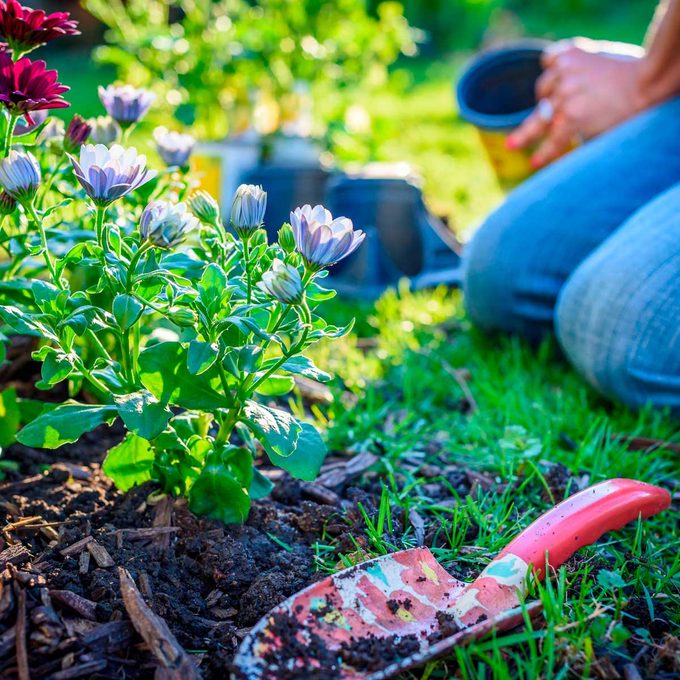How to Choose the Best Mulch for Flower Beds
Updated: Apr. 24, 2024
If you've taken the time to create attractive flower beds, you'll want to keep them healthy.

On This Page
Why You Should Add Mulch to Flower Beds
If you’ve taken the time to create attractive flower beds, you’ll want to keep them healthy. Using flower bed mulch is one way to do this.
Mulch helps keep weeds out and protects your plants’ roots. It also shields the soil, keeping it moist and preventing it from washing away. A fresh layer of mulch can also unify and enhance the beauty of your flower beds.
Types of Flower Bed Mulch
There are many types of mulch you can use for your flower beds on the market, from shredded wood bark to rubber and cocoa bean hulls. Experts say one of the best mulches is compost, which is discarded waste from your yard and kitchen. Since compost is made of organic materials, it enriches the soil as it decomposes.
Pine needles are another highly-regarded mulch. A natural material, they’re healthy for plants. They also give off a pleasant scent, and water easily passes through them. Since pine needles are acidic, they’re extra beneficial for acid-loving plants such as hydrangeas, camellias and azaleas.
Best Mulch for Flower Beds
But not all mulches are created equal. Beware of rubber mulch, which may leach pollutants such as zinc. It also may give off an offensive odor. If you prefer a wood mulch, opt for shredded bark and not wood chips.
While wood chips are often offered free of charge, they may be created from old pallets, treated lumber or other construction waste. These products may release arsenic, creosote and other undesirable elements into your soil. Plus, wood chips sometimes contain a destructive fungus that can attach itself to your home’s siding or car, especially if the chips are laid close to either.
Be aware that even the “good” mulches—such as compost or shredded bark—have some cons, too. These natural materials are attractive to insects, for one thing. And some people don’t care for the way they smell.
How to Mulch Flower Beds
When it comes time to spread mulch, most garden experts recommend laying down two or three inches of it in your flower bed. Mulch in the spring, when your perennials are emerging. Mulch your annuals after you plant them.
Some flowers benefit from winter mulching. Newly planted perennials can benefit from a cover of pine needles or straw during their first winter. This can protect them from winter’s freezing and thawing cycles, which can heave plants out of the ground. Some rose varieties may need mulching every winter.
Next: Discover everything you need to know about using gravel mulch in the garden.
